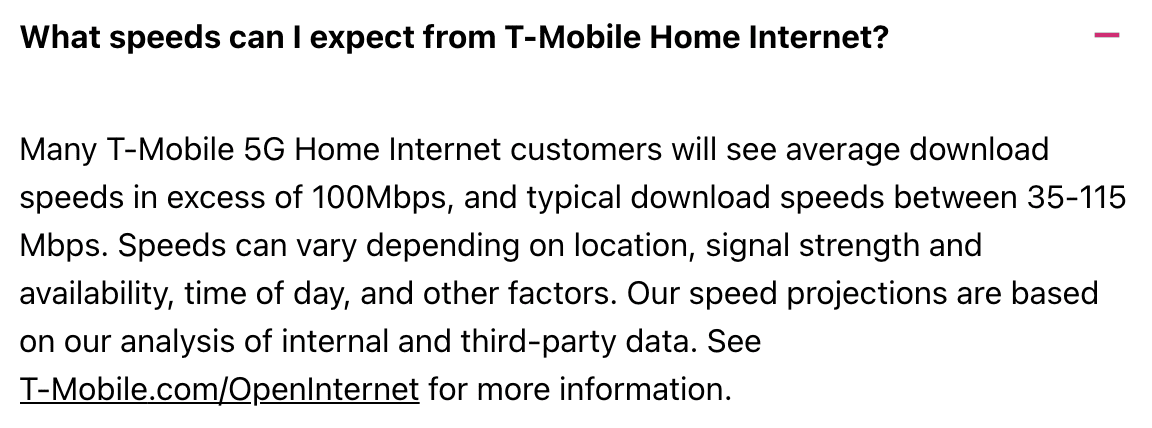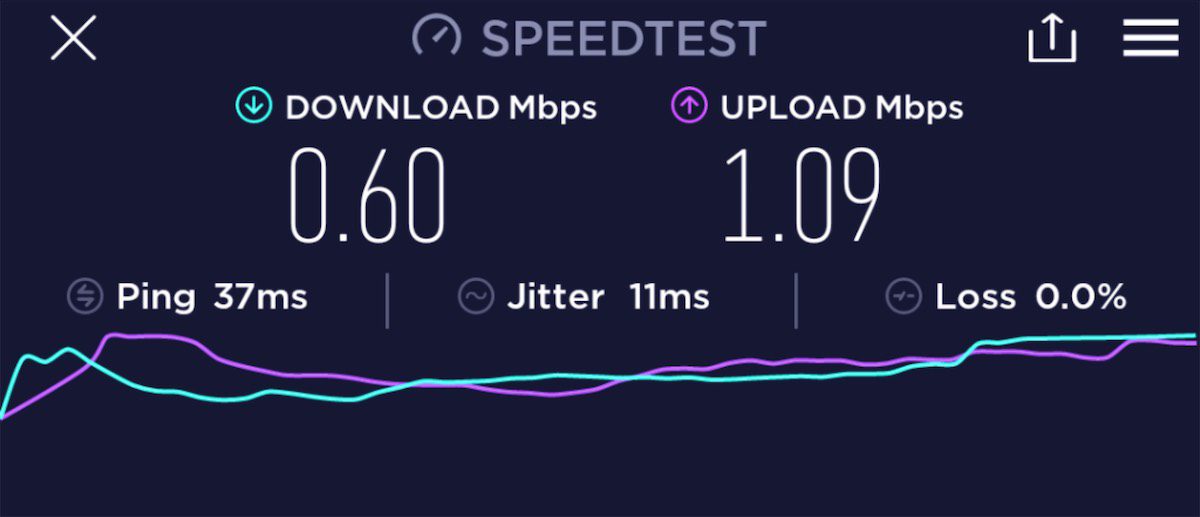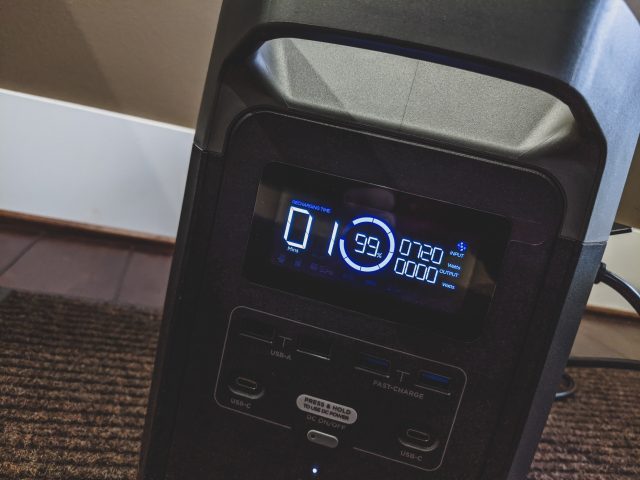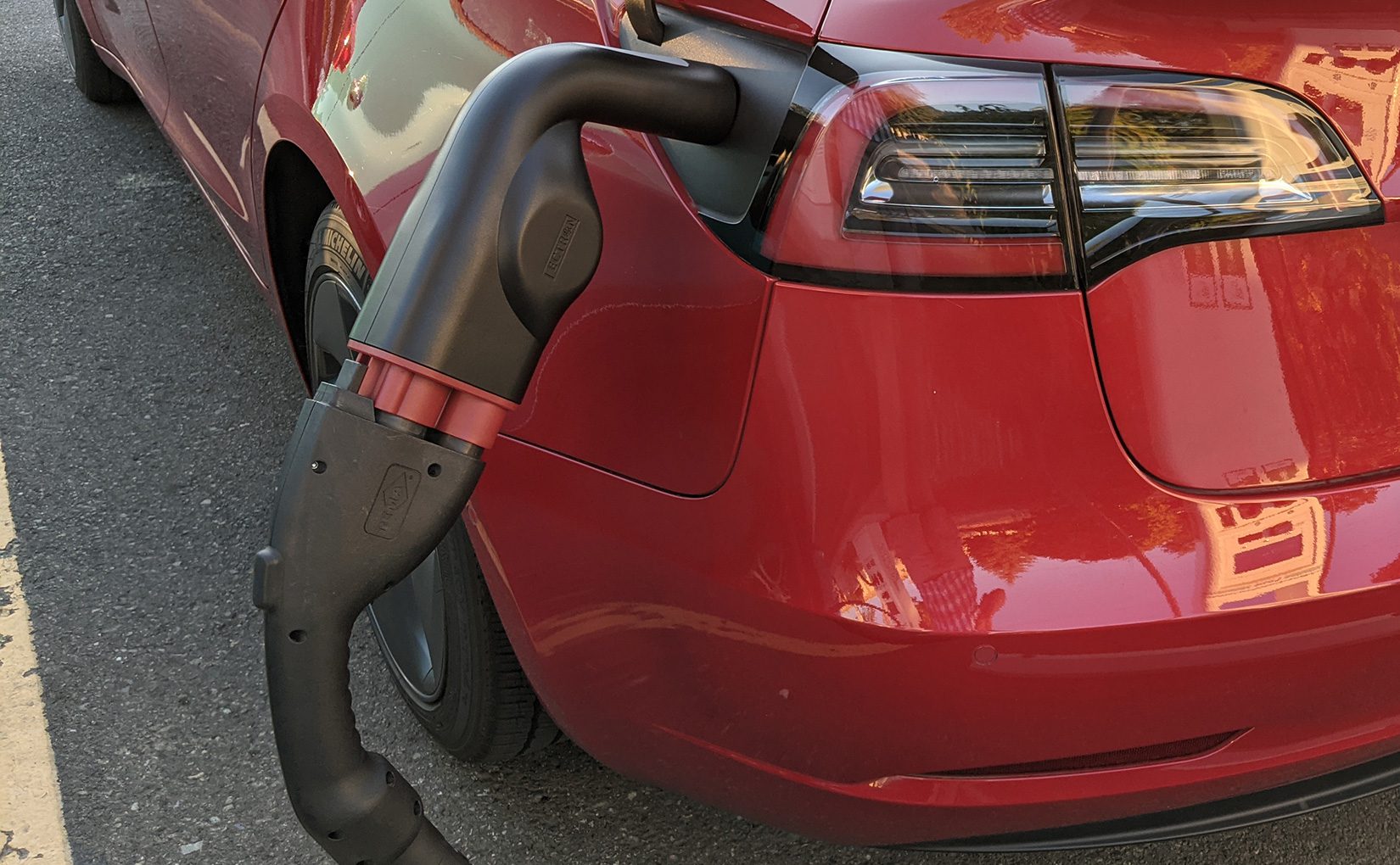After much spiritual searching, my dog Moka has decided to begin her monastic life: I present to you Friar Moka.

(I don’t tend to post things like this often, but putting a little joy into the world is never a bad thing.)
After much spiritual searching, my dog Moka has decided to begin her monastic life: I present to you Friar Moka.

(I don’t tend to post things like this often, but putting a little joy into the world is never a bad thing.)
The headline already tells you where this is going, but come with me on an August 2021 journey that started with hope and ended in despair.
By way of background, I have two choices for home internet service where I live in a suburb of Renton, Washington: CenturyLink or Xfinity. Because I run a Plex server at home, and do a lot of video/photo uploads, having decent upload speeds and no data cap is important to me. Xfinity is off the table as even their fastest plan in my area (1200 mbps for $80/month) still has a 1.2TB data cap and the upload speeds are 35mbps (and Xfinity hides this fact). Plus, Comcast is the devil 👿 and I don’t want to give them my money.
So for 10 years I’ve stayed with CenturyLink’s DSL-based product. My community of 38 homes is too small for them to run fiber to, so I’m stuck with 80mbps down and 40mbps up. I long for more competition in the Internet provider space and it’s frustrating to me there isn’t more choice — though I often remind myself at least I have two options, many people in the USA have one or no access at all.
On the plus side, the CenturyLink connection is very stable, costs $50/month, and there’s no data cap. 80mbps is generally enough for my household, though I of course long for something better — and when I received an email from T-Mobile sharing that their 5G home Internet service was available in my ZIP code I signed up immediately…after I confirmed I could cancel if it didn’t work because I was hugely skeptical of their claims.
Why? People using TMO that come to my home get very weak signal. In early 2021 I tried a TMO mobile WiFi hotspot and had terrible signal and speeds. So it was with a large grain of salt I took TMO at their word their 5G signal was going to work great in my home. At the time, their speed claims were a minimum of 100mbps up and down, with the reps telling me verbally I should speeds around 300mbps. This was enough to lure me into testing it. It’s worth noting their web site now says typical speeds are 35-115mbps which is a dramatic downgrade to their initial marketing.

Their sign up process was incredibly invasive – at one point I wondered if I was being phished because they were asking for so many pieces of ID and information.
It took a few months for me to get the combo modem/ WiFi router (more demand than supply), but when it finally showed up I was excited to give it a try. Setup was fast and easy; after a couple of minutes I’d booted it up, applied a firmware update, and was ready to test it. I put it in the window of my main floor office and was immediately concerned, but not shocked, then I saw I only had two bars of signal.

Signal strength and speed are not linked though (despite what you might think), so I ran a speedtest on my phone connected to the TMO router. The results? 😩

10 years ago today, my family and I drove across the border, leaving our life in Canada 🇨🇦 behind and embarking on a new adventure: working and living in the 🇺🇸United States of America. It’s gone by so quickly, my brain can’t quite grasp it’s been a full decade of my life. It was such a scary 😱 decision at the time — leaving behind our friends and family, moving to a place where we knew no one, and where we’d be starting over from scratch. Keep in mind that neither my wife nor I moved away from home to go to college: our entire world was in our hometown of Calgary.
So much has happened in the past 10 years! Some of the highlights that come to mind, more or less in order, are:
Looking back on the past 10 years, I feel a tremendous sense of gratitude for the blessing that have been showered upon my family and I. I’m so glad that every other door in Canada was closed to me, and that Ashely and I had the courage to leap through the open door that led us to this life. Here’s to the next 10 years!
In 2019 I backed a crowdfunded product called the EcoFlow DELTA. While it was promoted as a “battery powered generator”, the name was misleading: fundamentally a generator creates one form of power by consuming another, and this was a battery that stored and outputted electrical power. It’s a battery. A really, really big battery: 31 pounds and 1260 Wh of power to be exact. It has six AC outlets supporting up to 1800 watts of output, 3300 watts of surge protection, pure sine wave output, four USB-A ports (12 or 18 watts per port), two USB-C ports (60 watts per port), and it charges via AC power, solar (up to 400 watts input), or 12V car adaptor.
I backed the project for $799 after we had an 18 hour power outage at my home and I found it frustrating how many things wouldn’t function. I was looking for a specific solution to allow us to continue using our on-demand hot water heater, which uses natural gas but requires electricity to operate. When the power goes out it’s relatively easy to create light and bundle up if you’re cold, but the immediate lack of hot water is an uncomfortable problem for a family with two kids. I had a quote on a natural gas-powered generator, but the $6000 price tag was too high for the rarity of the outages. I’d need to lose power several times a year for 20+ hours each time to justify that expense.
The EcoFlow DELTA arrived in January 2020, and it exceeded all my expectations. I took a bunch of photos because I thought I’d write up a long, thoughtful review of it…and didn’t. That review never quite got written, but I had all these pictures and a few thoughts I wanted to share, so here’s a photo essay of sorts for anyone interested in the DELTA.
* This was the most badass battery that EcoFlow made in 2019, but in mid-2021 they release the monstrous DELTA Pro, a 99 pound battery with 3600Wh of power! 🤯 But it’s also $3599, so…🙃

I admit it: I’m an armchair product manager.
Every time I use a new product or service, I either applaud it or I’m critical of the user experience. Often both! I wrote product reviews on various tech web sites (mostly my own) for ~15 years, and when I worked for Spb Software I took on the role of a product manager for Spb Imageer, so I’ve experienced both sides of this coin to some extent (though much more on the reviewing side).
Working at HTC also gave me interesting opportunities to learn more about the decisions that go into creating hardware and software. I understand every product is a series of trade-offs; most teams don’t have enough developers to build things they way they wish they could, and timelines are never quite long enough to fit in every feature and testing.
But…
Sometimes product managers and UX designers will make such inexplicably awful choices, you have to wonder what they were thinking. You also have to wonder if they tested with actual customers in real-world use, or if it was never tested by anyone other than an internal QA team with a checklist and no knowledge of real-world use. The ESPN+ app on Google TV is one such app.
When I bought a Chromecast with Google TV late last year (what a mouthful of a product name!), I was genuinely excited about it – this was the first truly new execution of Google’s Chromecast platform since the first one launched. I’ve done a fair amount of tweeting about my impressions of the hardware/software from Google – I wish Twitter had a better search function, but here are a few – so this blog post is focusing on one very specific scenario: how utterly terrible the Chromecast with Google TV is for watching long-form content on a poorly designed app. Walk with me through this real-world scenario…
Continue reading Chromecast with Google TV + ESPN+ = Usability NightmareThe Epson-ET3760 is a decent printer, but it’s hobbled in a few ways that keep it from being an exceptional product. It was more a bit more expensive ($279 + tax on sale from Costco.com) than a comparable HP printer, but Epson makes less on the ink so it’s expected that you’ll pay more in hardware costs. It’s a “pay extra for the razor because you won’t need to buy as many blades” scenario. The bundle I bought from Costco included two extra black ink bottles, so I expect to not need ink for several years. Epson touts costs as low as 1 cent per ISO colour page.
The print quality is crisp – no complaints there. Compared to my HP though the colours are muted and don’t pop as much. Colour accuracy is significantly off as well. Red is more orange, blue is more grey, yellow is more orange. This means, unfortunately, that all that cheap ink you’re getting doesn’t measure up to what you get on an HP printer.
Continue reading Epson-ET3760 Review: Muted Colours, Awful User Experience, but Affordable PrintsMy family and I have a road trip to Canada coming up soon, and for the first time I’m going someplace — a small town in BC, Canada — where there aren’t Tesla Superchargers within range once I arrive. Even with a full charge from an overnight L2 charge, I can’t make it back onto the Supercharger network to continue my journey to Calgary (due to elevation and the fact that I bought the Model 3 SR+ rather than the LR which had 70 more miles of range). 🤷♂️
So I’m going to head east, and along the way there are no Superchargers, only CHAdeMO and CCS L3 chargers. Typically charging at around 32 miles per hour of charging, L2 chargers are too slow for a road trip unless you really don’t care when you get there. I need a way to connect my Model 3 to one of these L3 charging standards, and because:
…I figured I’d buy the LECTRON CCS adaptor off Amazon that, at the time I ordered it, had zero reviews. And it was $600. 😮 What could go wrong? 😜
This is a simple, bullet-point first impressions post meant to get something online fast, not a detailed, well thought-out review. I have too many of those already sitting in my WordPress drafts folder. 😉 So here we go…


So will I keep this or return it? I want to do more testing. It’s not a great product, that’s for sure, but it may be good enough for what I need.
I was having a WhatApp chat with family member about Tesla and competition from other EV makers. I figured it was worth sharing here.
This is a fun topic. 🙂 Globally, EVs as a share of the market is in the low single-digit %. Likely around 1-2% (edit: it’s 3%). Some countries like Norway it’s much more. So as more car makers bring more EVs to the market, it’s not about them competing only with Tesla, it’s about the whole market making the shift. There are going to be billions and billions spent transitioning from gas to EVs in the coming decade: cars, trucks, vans, etc. The weight and cost of batteries has, in the labs, hit a point where battery powered planes are within reach. The single biggest problem every EV maker has is battery supply. So Tesla will be one of many companies with products to take advantage of this buying wave. It’s a BIG pie.
Because the big car makers are so many years behind Tesla, it seems like it’s “Tesla against everyone”, but it’s not – Tesla will be one of many options in the EV market. Just like there’s no expectation that one gas car company would ever be able to have 100% of the market, neither will Tesla. They just control a large % of the EV market as it stands today, but the EV market is so tiny still globally.
Think about Toyota. In 2020 they were about 9% of the US market in sales. You’d never think Toyota was a failure as a car company – you see their cars everywhere – so let’s say Tesla “only” sells 9% of all EVs in the USA. That would still be an incredible business! I personally think they’ll control 2-3x the market share of Toyota if they can keep going.
They’re like Apple from a brand perspective. Few people are buying a Nissan Leaf because they want to; if they could afford a Tesla they probably would buy one. Tesla has never paid a cent in advertising. It’s really hard to overstate how much of an advantage that is. And if they can get a $25K car into the market by 2022-2023, that will open up a new market for them.
Remember Tesla is fundamentally an energy company trying to get the world off fossil fuels and they chose to make cars their first product to show people that battery-powered vehicles could be exciting and efficient.
Over 205,000 people tested positive for covid19 across the USA on Friday, a new record. 13.6 million people have/have had covid19, placing the USA 6th in the world on a per capita basis (interesting that it’s not higher, right?). 272K+ dead, 5th in the world per capita. Who’s #1? Belgium of all places. 🤷♂️
We live in society where immediate gratification is the norm, where we want what we want when we want it, and woe be to anyone who gets in our way (Karen would like to speak to your manager now). The idea of us not getting to do what we want, of saying no to ourselves, and of making a sacrifice, is completely alien to many.
That’s why millions of people still travelled on Thanksgiving to be with family, why people still go into restaurants to sit down and eat, and why by the time Christmas comes there will be many more funerals happening over Zoom.
It made us tremendously sad when we made the decision to not travel back to Canada for Christmas, but it’s the only rational option. Not seeing our family for a year is difficult, but far better than perhaps not seeing some of them ever again if we were to accidentally get them sick.
This holiday season, think of others more than yourself. 🙏🏼
Generally speaking, I’m not much of a trickster. Perhaps it’s the Canadian in me not wanting to have anyone feel hurt by anything I’d do, but last year I couldn’t resist having a bit of harmless fun. I realized a photo of a partially eaten cranberry cheeseball from our Christmas party was just too good of an opportunity to pass up…so I took a photo and posted it to Facebook Marketplace, looking for a buyer. 😜





